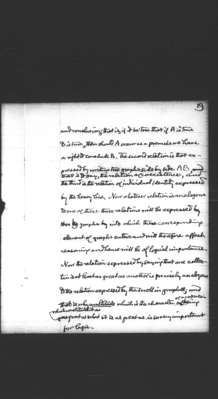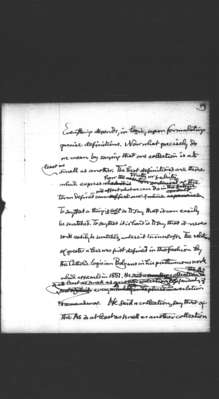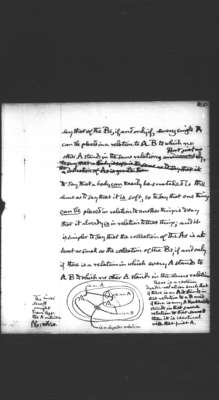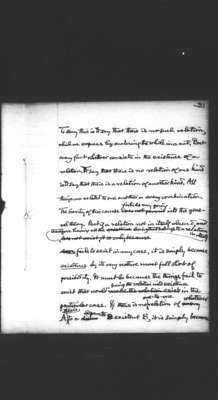Pages
21
18
there is not, if negative numbers are included.
Thus, the Arithmetic of Ordinal Numbers is Pure Mathematics; but the Arithmetic of Cardinal Numbers is Applied Mathematics. The conception of a Collection is, therefore, not a mathematical conception and the conception of Multitude is not a purely mathematical conception. But the conception of a collection is a highly important logical conception and for that reason, we will turn our attention to Multitude.
But why should the conception of Multitude be an important conception in logic? I will tell you. We have seen that there are three relations which subsist between the parts of graphs. The first is the relation expressed by the scroll [diagram]. This is the most important of all, since this is the relation of premiss
22
19
and conclusion; that is, if it be true that if A is true B is true, then should A occur as a premiss we have a right to conclude B. The second relation is that expressed by writing two graphs side by side AB, that is to say, the relation of coexistence, and the third is the relation of individual identity expressed by the heavy line. Now whatever relation is analogous to one of these three relations will be expressed by graphs into which the corresponding element of graphs enters and will therefore affect reasoning and hence will be of logical importance. Now the relation expressed by saying that one collection is at least as great as another is precisely analogous to the relation expressed by the scroll in graphs; and that is why multitude which is the character of a collection which constitutes it as great as what it is as great as is so very important for logic.
23
19
Everything depends, in logic, upon formulating precise definitions. Now what precisely do we mean by saying that one collection is at least as small as another. The best definitions are those which express how the truth or falsity of the term defined will affect what we can do in the future. To say that a thing is soft is to say that it can easily be scratched. To say that is is hard is to say that it never will easily be scratched, unless it turns soft. The relation of greater and less was first defined in this fashion by the Catholic logician Bolzano in his posthumous work which appeared in 1851. He said a collection, say that of the As is at least as small as another collection
24
20
say that of the Bs, if, and only if, every single A can be placed in a relation to B to which no other A stands in the same relation. But just as to say that a body can easily be scratched is the same as to say that it is soft, so to say that one thing can be placed in relation to another thing is to say that it already is in relation to that thing; and it is simpler to say that the collection of the As is at least as small as the collection of the Bs, if and only if there is a relation in which every A stands to a B to which no other A stands in the same relation.
[diagram] There is a certain dyadic relation such that if there is an A it stands in that relation to a B and if there is any A and it stands in that same relation to that same B then it is identical with that first A.
[marginal note bottom left:] The inner scroll might have left the A outside. No! not so.
25
21
To deny this is to say that there is no such relation, which we express by enclosing the whole in a cut. But every fact whatever consists in the existence of a relation. To say that there is no relation of one kind is to say that there is a relation of another kind. All things are related to one another in every combination. The brevity of this course forbids my going into the general theory. But if a relation not in itself absurd, and therefore having all the being that belongs to a relation in itself fails to exist in any case, it is simply because existence by its very nature must fall short of possibility. It must be because the things fail to exist that would bring the relation into existence in the particular case. If there is no one-to-one relation of whatever A there is to a separate existent B, it is simply because




